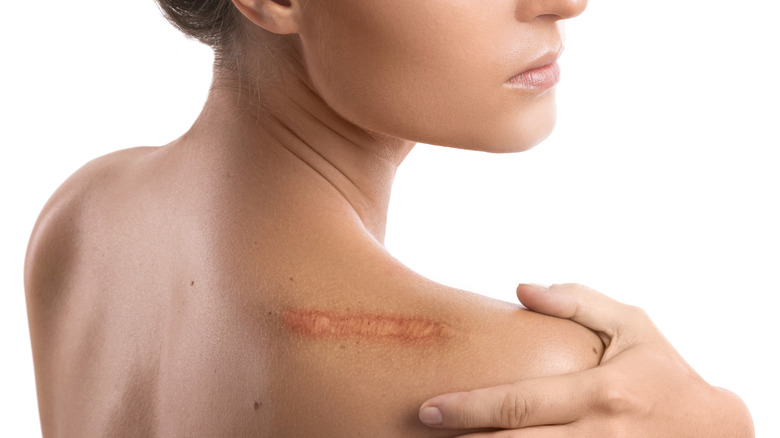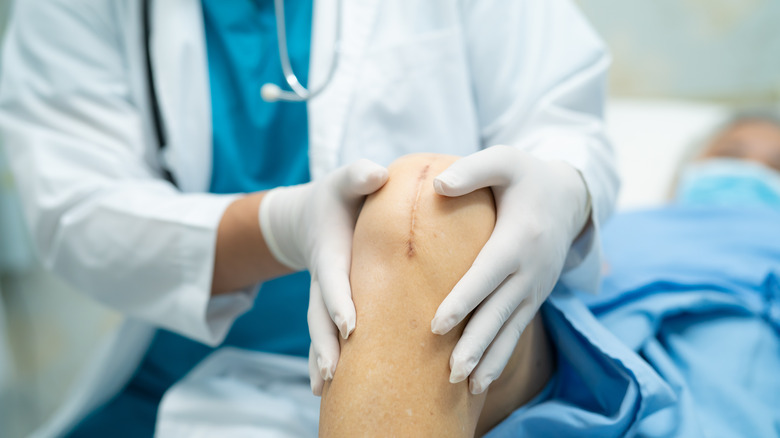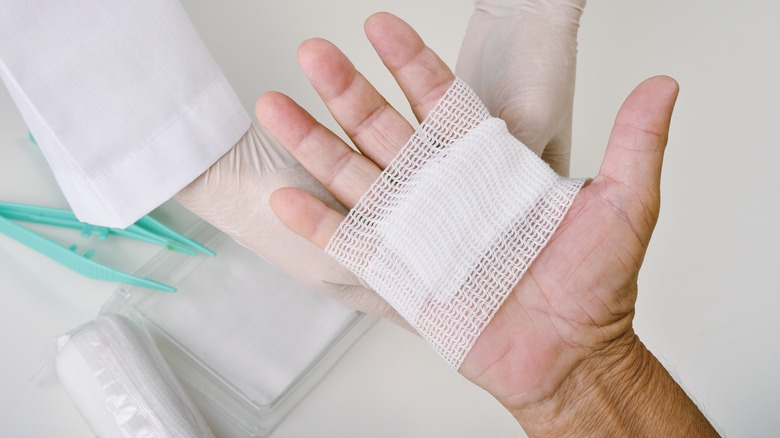Sutures Versus Stitches: What's The Difference?
If you have a wound, it's important to know your options. Overall, the goal of wound healing is to restore the integrity of the affected tissue and prevent infection, per Medical News Today. Proper wound care, such as cleaning the wound and keeping it moist, can help promote healing and minimize scarring, according to the American Academy of Dermatology Association (AADA). In addition, sutures and stitches can be used by your doctor to help a wound heal efficiently.
These two terms are often used interchangeably to refer to the thread or wire used to close wounds or surgical incisions (via Healthline Physicians Medical Urgent Care). In general, both sutures and stitches are an important part of the healing process, and they're both commonly used in surgical procedures.
Whether you have sutures or stitches, your doctor will provide specific instructions for caring for the wound. Follow these instructions carefully to ensure that the wound heals properly and to prevent complications. If you have any concerns or questions about your sutures, be sure to talk to your doctor. Beyond understanding how to care for your wound, it helps to know exactly what sutures and stitches are as well as their main differences.
What's the difference between sutures and stitches?
Technically, a suture is a medical device itself, while a stitch refers to the act of using a suture to close a wound, says Healthline. According to the source, sutures are used to close wounds or surgical incisions and are made of natural thread (such as silk), or synthetic thread (such as nylon or polyester). Although most minor wounds heal by themselves, sutures are still an important part of the wound-healing process, says WebMD. They work best for larger wounds to encourage the healing process. Without sutures, a wound might not be able to close properly and could become infected or develop complications, says WebMD.
According to a 2022 study published in StatPearls, different types of sutures and stitches are used depending on the location and type of wound, as well as other factors such as the patient's age and overall health. Absorbable sutures, for example, can be especially important for wounds that are under tension and offer better accuracy when stitching wound edges, says the study.
Some common types of sutures include simple interrupted sutures, which are used to close small wounds; continuous sutures, which are used to close longer wounds; and mattress sutures, which are used to provide extra strength and support (via Teach Me Surgery). How sutures are removed depends on their bodily location, according to a 2008 article published in the American Family Physician. In general, they're typically removed after the wound has healed.
How are stitches done?
According to Nemours Kids Health, when a doctor puts stitches in a wound, they will first clean the wound to remove any dirt or debris. They may use a sterilizing solution or saline water to clean the wound. The doctor will then use a needle and thread to close the wound, says the source. The type of thread and needle used will depend on the location and type of wound, as well as the patient's age and overall health, according to a 2011 article published in the journal Comprehensive Biomaterials. The doctor will carefully stitch the wound closed, pulling the edges of the wound together.
If you have stitches, it is important to take care of them properly to ensure that the wound heals properly and to prevent infection. According to Nemours Kids Health, it's best to avoid getting the wound wet or exposing it to water. Also, avoid applying any creams or ointments to it unless your doctor has instructed you to do so. Lastly, be gentle when touching the wound and avoid pulling or tugging on the sutures, as this can cause the wound to reopen or the sutures to come out prematurely.



